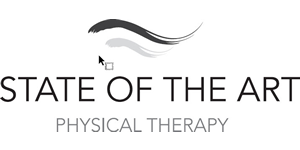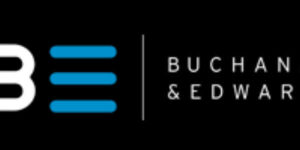| Crew and rowing have a complete set of terms and language to describe equipment, parts, commands, and techniques. It is essential, not only for the respect of the sport but also to enable a full understanding, for each member to learn the sport’s language and terminology. |
| Check |
| The interruption or braking of the boat’s forward momentum. Things that cause check during a race include poor bladework, rushing the slide, and hitting the front stops. |
| Check it (down) |
| Command to brake lightly. Blades are square and partly buried. Boat is slowed, not stopped. Used in landings, turning, before starts, etc. |
| Digging |
| The blade is too deep in the water during the drive. This really affects the set, and it’s hard to get a crisp finish. Sometimes seen with skying. The oar should not be entirely buried in the water during the drive, only the blade should be buried. |
| Feathering |
| Rolling the blade with your inside hand (hand closest to the blade) so the blade is parallel to the water, concave upwards. This is done at the start of the recovery, and the blade is slowly squared again before the end of the recovery. Feathering makes rowing easier especially in windy, choppy conditions because the blade doesn’t slap the waves as much and because air resistance on the blade is decreased. |
| Hanging at the Catch |
| A pause in a rower’s rhythm as s/he is about to place the blade into the water. This happens when you rush the slide and get to the top before the other rowers, and then your blade just hangs in the air while you wait for everyone else. Hanging at the catch means you’re rushing the slide more than you need to and thus slowing the boat, it’s inefficient because you’re wasting energy hurrying, it throws off the “swing” or unified movement of the other rowers, and also makes it very hard to catch with the other rowers. Hanging at the catch also happens when the rower drops their hands into the bottom of the shell resulting in the oar to be raised far off the water at the catch. |
| Hold Water |
| Command to brake hard! Blades must be square and buried, oars held tightly to break the boat’s momentum. Very important for emergency situations, also used before starts, etc. |
| Missing Water |
| This happens when you don’t raise your hands as you come up to the catch, but jam the oar in the water when you’re already at the top (front) of the slide. When you do it right, you see water splashing behind your blade. When you do it wrong, the first part of your stroke is actually out of the water, and you lose a lot of power – that’s your strong leg drive you miss out on, which is why this is important. Don’t worry about slowing the boat with your little backsplash – worry more about not missing water. |
| Rushing the Slide |
| Coming up the slide too quickly and/or accelerating up the slide. The recovery should be a slow deceleration, and rushing the slide creates momentum in the direction opposite to the where the boat is going (resulting in check). Whether or not you bounce on your legs or hit the front stops at the top (front) of the slide, rushing the slide slows the boat. Use your legs to brake the recovery. Rushing also wastes energy; it’s better to pull hard twice (and relax/breathe during the recovery) than to pull hard three times in the same time (and spend even more energy hurrying up the slide, and slowing the boat by rushing on top of that) – you wouldn’t last very long aerobically, and you’re not being efficient. If the stroke rating is fast, bring up the rating in the water by pulling harder, and concentrate on keeping the recovery smooth and decelerating. It’s ideal to have the recovery take twice as long as the drive (this is having a good ratio). |
| Set |
| The side-to-side balance of the boat. The boat should be balanced always, no rocking, and no consistent leaning down to one side! Different oar heights either in and out of the water, poor rhythm, not having simultaneous catches and finishes, and not leaning properly around the rigger all affect the set. Balance drills can improve the set. Use small ajustments with your hand levels to set the boat. |
| Set (the boat) |
| Command to balance the boat. Generally used when rowers are not rowing, but sit relaxed with both hands on the oar as it floats feathered on the water. Each rower setting the boat is actively maintaining a constant oar handle height, thereby keeping the set/balance of the boat steady and centered. Rowers’ body leans (or lack thereof) also affect the side-to-side balace. Sometimes all rowers are setting, other times only some rowers set. If someone is rowing behind you while you’re setting, move your seat up to avoid getting hit in your back. Rowers also “set” the boat when they pause or weigh enough and let the boat run with oars in the air – the oars and bodies are again used to balance the boat so it doesn’t rock side-to-side or run with either port or starboard side down. |
| Shooting the Slide |
| Starting the drive with your rear end first (not the center of your back), leaving your shoulders in back behind initially. This ends up being a quick jerk of the seat backwards, a result of a too-explosive leg drive and not moving the blade through the water as your legs push. This is very wasteful of your powerful leg drive, puts your back in a very inefficient position for transferring leg drive to driving the blade, may strain your lower back, and even causes the boat to “check” or jerkily slow down. [The checking the action/reaction of the boat to go in the wrong direction resulting from the jerky movement of your butt (and nothing else) in the right direction.] The drive should have a firm start, but be controlled and smoothly accelerating all the way through. Think of the oar handle and the seat being joined by a bar that maintains a constant distance between them during the first part of the drive. |
| Square |
| The blade is perpendicular to the water. “Rowing square blades” is rowing without feathering during the recovery. |
| Weigh Enough (“weigh ‘nuf”) |
| Command for rowers to stop! Usually given with a 2-stroke warning, as in: Weigh enough in two! [rowers know what’s about to happen] ONE, [said at catch; rowers complete one full stroke] TWO! [said at second catch; rowers complete this second full stroke, end at arms away, blade squared, boat balanced]. Generally after this, the cox will tell rowers And down, and the rowers feather and set the boat. (Saying “and down” sometimes depends on the cox – some coxes prefer that rowers automatically set after weighing enough, even though “weigh enough” implies arms-away, not down. Whatever the cox’s policy, it should be clear and consistent.) In an emergency, the command is Weigh enough, hold water! and you should stop whatever you’re doing and hold water. |
News
Events
Upcoming events for the Stone Bridge Rowing team include:
August 2024
Thursday August 22
- All Day
-
Stone Bridge Rowing Team - First Day of LCPS43100 Hay Rd Ashburn, VA, United States
Friday August 30
- All Day
-
Stone Bridge Rowing Team - NO SCHOOLN/A
September 2024
Monday September 2
- All Day
-
Stone Bridge Rowing Team - NO SCHOOLN/A







